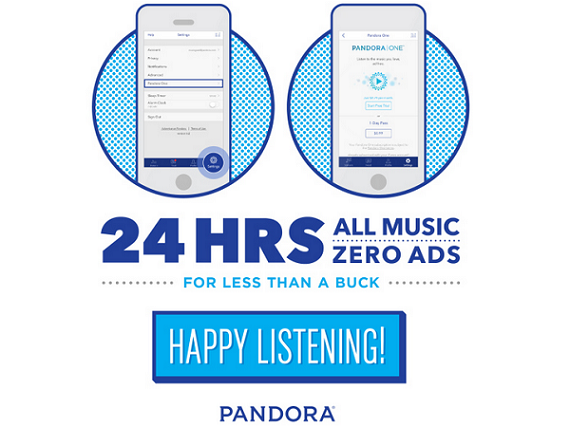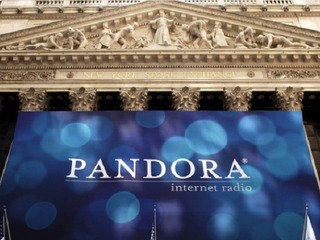

Back when I wrote about Pandora for Vator’s “What’s Your Business Model?” series, I had to question the company’s long-term viability. The majority of its funding was coming from advertising, but it was paying such high royalty costs, which increased the price of every song is played, that it had more money going out than coming in.
The answer to that was one of two things: either raise advertising rates, and risk driving off its main source of revenue, or increase the amount it was getting from its subscription plan. The company has obviously chosen the second option.
Pandora has launched a pretty smart way to pull in even more users to its Pandora One subscription plan: give them a cheaper way to sample the product. On Tuesday, the company announced the launch of the One Day Pass. Basically it gives users all access to Pandora One, including ad-free radio, all for 99 cents.
Starting on September 10, all users have to do to access it is go to settings, choose Pandora One, and then select Day Pass.
This is a move that makes sense for a variety of reasons. First of all, for someone who is only going to use the service for one or two days a month, it makes more sense for them to pay the 99 cents a day rather than the $4.99 monthly rate. That means that Pandora will be getting extra money from users who are not interested in signing up, but who might want to have ad-free radio for a party or get together.
The other reason this makes sense is that, as I said earlier, the best way to draw people in is to show them what they are missing. Are the ads on Pandora that bad to deal with? Honestly, no. But the company has to be hoping that, once a user experiences the ad free option, they will not want to go back to the free service.
Though revenue from its subscriptions has been increasing, it has not been growing as a percentage of the company’s total revenue. In the full year 2014, Pandora took in $188 million from its subscription business, up from $116 in 2013, an increase of 38%, while advertising revenue was $732.3 million, a 40% year-over-year increase from $521 million in 2013.
In the second quarter of 2015, subscription revenue was $54.6 million, a 31% year-to-year increase, compared to $230.9 million for advertising, a 30% year-to-year increase.
Getting more people to pay for their music might help the company offset its crippling royalty costs.
The problem for Pandora is that the more songs that listeners access, the more ads Pandora will sell, and the more money the company will get. That obviously works in Pandora’s favor, and allows them to offer the service to its users for free.
But, at the same time, the more songs that users play, the more Pandora has to pay out in royalty fees. And that is causing the company major headaches.
Pandora wound up with a $40 million net loss in 2014, up from $30 million in 2013. For Q2 2015 net loss was $15 million, up from $11 million the same quarter the year prior. The vast majority of all of that is going to “content acquisition costs,” or the price of actually being able to stream all of that music. That number is increasing every year.
Pandota has fought to keep royalty payments down, and has had the courts rule in its favor against the American Society of Composers, Authors and Publishers (Ascap), as well and Broadcast Music Inc. (BMI), each of whom represent hundreds of thousands of songwriters, composers and publishers.
However the Justice Department didn’t seem too keen on the company doing this, and has threatened to step in.
The fact that Pandora is now encouraging more people to shell out money for ad-free music, meaning that the company would not have its revenue depending on how many songs users actually listen to each month, as long as they still pay, may be an indication that, long-term, a free music service is simply unsustainable.
(Image source: blog.pandora.com)

















